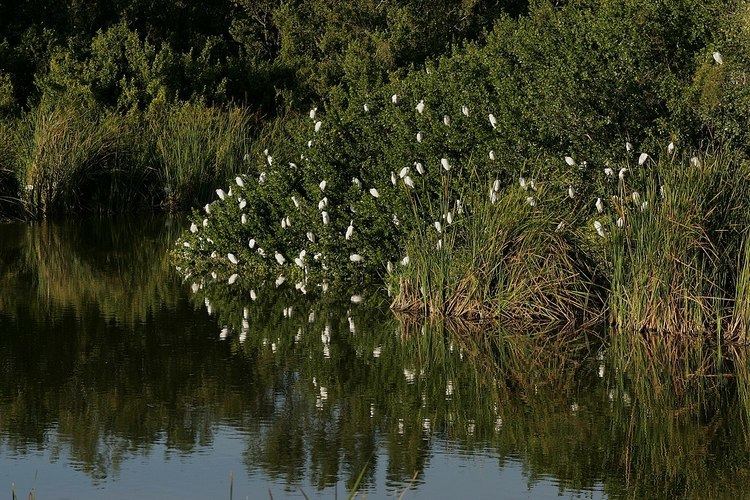Established 1976 | Area 6,364 km² | |
 | ||
The Everglades & Dry Tortugas Biosphere Reserve (established 1976) is a UNESCO Biosphere Reserve in Florida and the Gulf of Mexico. The 636,411 hectares (2,457.20 sq mi) reserve encompasses Everglades National Park and Dry Tortugas National Park, including historic Fort Jefferson and the seven Dry Tortugas islands.
Contents
Ecological characteristics
Everglades National Park is a shallow basin tilted to the southwest and underlain by extensive Pleistocene limestones.
Dry Tortugas National Park consists of a group of seven coral reefs with three major banks (Pulaski, Loggerhead and Long Key) forming a pseudo-atoll with a mud-bank type formation.
The biosphere reserve lies at the interface between temperate and subtropical America between fresh and brackish water, shallow bays, deeper coastal waters and coral reefs, thus creating a complex of habitats supporting a high diversity of flora and fauna.
The area of transition from freshwater (glades) to saltwater (mangrove) is a highly productive zone that incubates great numbers of economically valuable crustaceans. Southern Florida vegetation is unique in the United States, but similar communities occur throughout the Caribbean and parts of tropical America.
Habitats include freshwater and wet prairies characterized by islands of tropical hardwood trees; salt marshes; mangrove forests; beach and dune complexes; brackish water estuaries; cypress swamps; marine systems; and coral reefs.
Human activities
The reserve contains some 200 known archaeological sites, with two archaeological districts nominated in the National Register of Historic Places. Historic use has left a rich record from Native American use, settlement, farming and fishing activities.
A Native American group, the Miccosukee Tribe of Florida, has a special use trust area inside the Everglades National park for tribal headquarters, visitor center, housing and businesses.
As of 1990, some 40 park personnel and 50-100 concession personnel lived in residential areas in the park. The area receives more than 84,000 visitors for snorkeling, swimming, sport fishing and touring the historic sites. The Everglades Regional Collection Center houses some 50,000 biological and cultural museum artifacts and archives, as well as a library with 10,000 volumes.
Fort Jefferson National Monument offers excellent research possibilities on coral reef ecology, subtropical islands, bird migrations, and fisheries (IUCN, 1990).
